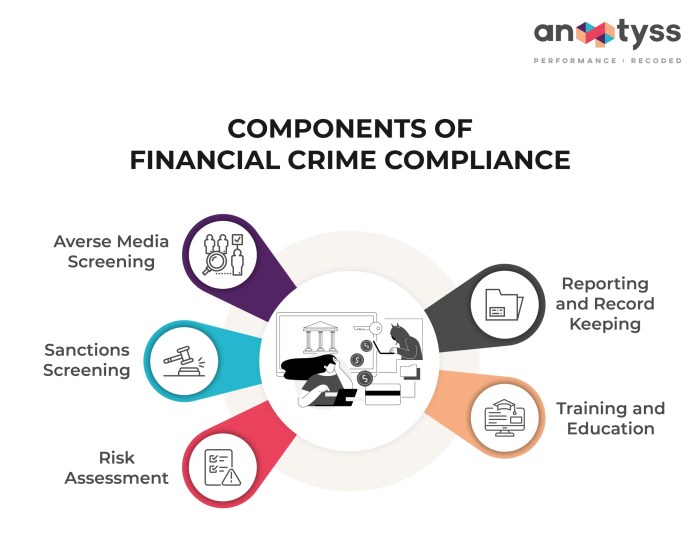Income Statement vs Balance Sheet Key Differences: Understanding the core distinctions between these two fundamental financial statements is crucial for anyone seeking to analyze a company’s financial health. While both provide vital insights, they offer different perspectives, one focusing on profitability over a period, the other on a snapshot of financial position at a specific point in time. This exploration will illuminate the key differences, their interrelationships, and how to leverage both for a comprehensive financial assessment.
This analysis will delve into the definitions, components, and time horizons of each statement, highlighting their contrasting presentations of financial data. We’ll examine the crucial relationship between the income statement’s net income and the balance sheet’s retained earnings, illustrating how changes in assets and liabilities impact both. Through hypothetical scenarios and key financial ratios, we will demonstrate how a combined analysis provides a much richer understanding of a company’s financial performance and stability than either statement alone.
Defining Income Statement and Balance Sheet
The income statement and balance sheet are two fundamental financial statements that provide crucial insights into a company’s financial health. Understanding their differences and how they complement each other is essential for effective financial analysis. This section will define each statement, outlining their purpose and key components.
Income Statement Definition and Components
The income statement, also known as the profit and loss (P&L) statement, summarizes a company’s revenues and expenses over a specific period, typically a quarter or a year. Its primary purpose is to show whether the company made a profit or incurred a loss during that period. The statement follows a simple formula: Revenue – Expenses = Net Income (or Net Loss).
Key components of an income statement include:
- Revenue: The total income generated from the sale of goods or services.
- Cost of Goods Sold (COGS): The direct costs associated with producing the goods or services sold. This includes materials, labor, and manufacturing overhead.
- Gross Profit: Revenue minus COGS. This represents the profit generated before considering operating expenses.
- Operating Expenses: Expenses incurred in running the business, such as rent, salaries, utilities, and marketing costs.
- Operating Income: Gross profit minus operating expenses. This shows the profit generated from the core business operations.
- Other Income/Expenses: Income or expenses not directly related to core operations, such as interest income or losses from investments.
- Net Income (or Net Loss): The final profit or loss after considering all revenues and expenses.
Income Statement Example
Let’s consider a hypothetical business, “Acme Widgets,” for the year 2023:
Revenue: $500,000
Cost of Goods Sold: $200,000
Gross Profit: $300,000
Operating Expenses: $150,000
Operating Income: $150,000
Other Income: $10,000
Net Income: $160,000
Balance Sheet Definition and Components
The balance sheet provides a snapshot of a company’s financial position at a specific point in time. Unlike the income statement, which covers a period, the balance sheet shows what a company owns (assets), what it owes (liabilities), and the owners’ equity at a particular moment. It adheres to the fundamental accounting equation: Assets = Liabilities + Equity.
Key components of a balance sheet include:
- Assets: What a company owns, including current assets (cash, accounts receivable, inventory) and long-term assets (property, plant, and equipment).
- Liabilities: What a company owes to others, including current liabilities (accounts payable, short-term loans) and long-term liabilities (mortgages, long-term debt).
- Equity: The owners’ stake in the company. This is the residual interest in the assets after deducting liabilities. For a corporation, this is often referred to as shareholder’s equity.
Balance Sheet Example for Acme Widgets
Here’s a sample balance sheet for Acme Widgets as of December 31, 2023:
| Assets | Amount | Liabilities | Amount |
|---|---|---|---|
| Cash | $50,000 | Accounts Payable | $25,000 |
| Accounts Receivable | $75,000 | Long-Term Debt | $100,000 |
| Inventory | $100,000 | Equity | $175,000 |
| Property, Plant & Equipment | $200,000 | Total Liabilities & Equity | $300,000 |
| Total Assets | $425,000 |
Time Horizon Differences

The income statement and balance sheet differ significantly in the time period they cover. Understanding this difference is crucial for accurate financial analysis and interpreting a company’s performance and financial health. This section will explore the contrasting time horizons of these two fundamental financial statements.
The income statement presents a company’s financial performance over a *period* of time, typically a quarter (three months) or a year. It summarizes revenues earned and expenses incurred during that specific period, resulting in a net income or net loss. This means the income statement provides a snapshot of the company’s profitability *over time*. Conversely, the balance sheet provides a snapshot of a company’s financial position at a *specific point in time*. It shows the company’s assets, liabilities, and equity at the end of a particular day, month, quarter, or year.
Implications of Differing Time Horizons for Financial Analysis
The differing time horizons of the income statement and balance sheet have significant implications for financial analysis. For example, a company might report a profitable income statement for a given year, suggesting strong performance. However, the balance sheet might reveal high levels of debt, indicating potential financial risks. Analyzing both statements together provides a more complete picture. The income statement shows the flow of money over time (profitability), while the balance sheet shows a stock of assets and liabilities at a specific moment (financial position). This complementary nature allows analysts to assess a company’s short-term liquidity, long-term solvency, and overall financial health more effectively. For instance, an analyst might use the income statement’s revenue figures to project future cash flows, while using balance sheet data to assess the company’s ability to meet those obligations. Comparing income statement data across multiple periods helps reveal trends in profitability, growth, and operational efficiency. Conversely, analyzing balance sheet data over time illustrates trends in asset management, debt levels, and overall financial structure.
Fundamental Differences in Data Presentation
The income statement and balance sheet, while both crucial financial statements, present data in fundamentally different ways, reflecting their distinct purposes. The income statement focuses on a company’s financial performance over a period, while the balance sheet provides a snapshot of its financial position at a specific point in time. Understanding these presentation differences is key to interpreting each statement accurately.
The core difference lies in how each statement categorizes and displays financial information. The income statement uses a vertical format, detailing revenues, expenses, and the resulting net income or loss. Conversely, the balance sheet employs an accounting equation format, balancing assets against liabilities and equity.
Revenue, Expense, and Net Income versus Assets, Liabilities, and Equity
The income statement presents data according to the accounting equation: Revenues – Expenses = Net Income (or Net Loss). It tracks the inflow of resources (revenues) generated from business operations and the outflow of resources (expenses) incurred in generating those revenues. The difference represents the company’s profitability over the reporting period. For example, a company might report $1 million in revenue and $700,000 in expenses, resulting in a net income of $300,000.
In contrast, the balance sheet uses the fundamental accounting equation: Assets = Liabilities + Equity. It shows the company’s resources (assets) at a specific moment, categorized into current and non-current assets. It also details the company’s obligations (liabilities), both current and long-term, and the owners’ stake (equity). For instance, a company might list $500,000 in assets, comprising $200,000 in liabilities and $300,000 in equity. This equation must always balance.
- Income Statement: Presents financial performance over a period (e.g., quarterly, annually). Data is organized vertically, showing revenues, expenses, and net income/loss.
- Balance Sheet: Presents financial position at a specific point in time. Data is organized using the accounting equation, showing assets, liabilities, and equity.
- Income Statement Focus: Profitability, revenue generation, and expense management.
- Balance Sheet Focus: Financial health, solvency, and the composition of a company’s assets, liabilities, and equity.
- Income Statement Data: Flows of resources (revenues and expenses) over time.
- Balance Sheet Data: Stock of resources (assets, liabilities, and equity) at a specific point in time.
Relationship Between the Two Statements
The income statement and balance sheet are intrinsically linked, providing a holistic view of a company’s financial health. They don’t exist in isolation; instead, the information presented on one directly impacts the data displayed on the other, creating a continuous financial cycle. Understanding this relationship is crucial for a complete financial analysis.
The income statement reports a company’s financial performance over a specific period, typically a quarter or a year. The balance sheet, conversely, presents a snapshot of a company’s financial position at a specific point in time. The key connection lies in how the income statement’s results feed directly into the balance sheet.
Net Income’s Impact on Retained Earnings, Income Statement vs Balance Sheet Key Differences
Net income, the bottom line of the income statement, represents the company’s profit after all expenses have been deducted from revenues. A significant portion of this net income is typically reinvested back into the business, increasing the company’s retained earnings. Retained earnings are a component of shareholders’ equity on the balance sheet. For example, if a company reports a net income of $100,000 for the year, and it decides to retain all of this profit, its retained earnings on the balance sheet will increase by $100,000. Conversely, a net loss would decrease retained earnings. Dividends paid to shareholders also reduce retained earnings, as this represents a distribution of profits rather than reinvestment. The balance sheet, therefore, reflects the cumulative effect of a company’s profitability over time, as represented by the retained earnings account.
Impact of Asset and Liability Changes on the Income Statement
Changes in assets and liabilities directly influence the income statement. Increases or decreases in certain assets and liabilities are recorded as expenses or revenues. For instance, an increase in accounts receivable (an asset) reflects sales made on credit, boosting revenues on the income statement. Conversely, a write-off of bad debt (an asset reduction) would appear as an expense. Similarly, an increase in accounts payable (a liability) represents purchases made on credit, which doesn’t directly impact the current period’s income statement. However, when these purchases are used to generate revenue, their cost will eventually be recognized as an expense (cost of goods sold) on the income statement. Depreciation of fixed assets (a non-cash expense) reduces the value of assets on the balance sheet while simultaneously impacting the income statement as an expense. This illustrates how the balance sheet’s asset and liability accounts directly influence the income statement’s revenue and expense figures. A detailed analysis of the changes in these accounts across periods is essential for understanding the drivers of profitability.
Illustrative Examples
Let’s examine two contrasting business scenarios to highlight how the income statement and balance sheet reveal different aspects of a company’s financial health. These examples will demonstrate how high profitability doesn’t necessarily equate to strong financial stability, and vice-versa. We’ll use simplified income statements and balance sheets for clarity.
Scenario 1: High Profitability, Low Liquidity
This scenario depicts a business generating substantial profits but struggling with cash flow. This could be due to various factors, such as slow-paying customers, high inventory levels, or significant capital expenditures.
Income Statement: Company A
| Account | Amount ($) |
|---|---|
| Revenue | 1,000,000 |
| Cost of Goods Sold | 400,000 |
| Gross Profit | 600,000 |
| Operating Expenses | 200,000 |
| Net Income | 400,000 |
Balance Sheet: Company A
| Asset | Amount ($) | Liability | Amount ($) |
|---|---|---|---|
| Cash | 50,000 | Accounts Payable | 300,000 |
| Inventory | 600,000 | Long-term Debt | 200,000 |
| Other Assets | 150,000 | Equity | 300,000 |
| Total Assets | 800,000 | Total Liabilities & Equity | 800,000 |
Company A shows a healthy net income of $400,000, indicating strong profitability. However, its balance sheet reveals a concerningly low cash balance of $50,000 against significant accounts payable ($300,000) and high inventory ($600,000). This illustrates a mismatch between profitability and liquidity. The income statement shows how well the company is performing in terms of generating profits, while the balance sheet highlights its potential struggles to meet its short-term obligations.
Scenario 2: Low Profitability, High Liquidity
This scenario represents a business with modest profits but strong cash flow and a healthy financial position. This could be a result of efficient cost management, a conservative business model, or a strong focus on working capital management.
Income Statement: Company B
| Account | Amount ($) |
|---|---|
| Revenue | 500,000 |
| Cost of Goods Sold | 200,000 |
| Gross Profit | 300,000 |
| Operating Expenses | 250,000 |
| Net Income | 50,000 |
Balance Sheet: Company B
| Asset | Amount ($) | Liability | Amount ($) |
|---|---|---|---|
| Cash | 200,000 | Accounts Payable | 50,000 |
| Inventory | 100,000 | Long-term Debt | 0 |
| Other Assets | 100,000 | Equity | 350,000 |
| Total Assets | 400,000 | Total Liabilities & Equity | 400,000 |
Company B’s income statement shows a much lower net income ($50,000) compared to Company A. However, the balance sheet reveals a significantly healthier liquidity position, with a substantial cash balance of $200,000 and low accounts payable. This demonstrates that a company can be financially stable even with lower profitability, provided it manages its cash flow effectively. The balance sheet provides a snapshot of the company’s financial health at a specific point in time, complementing the income statement’s focus on performance over a period.
Analyzing Financial Health Using Both Statements: Income Statement Vs Balance Sheet Key Differences
The income statement and balance sheet, while distinct, provide a complementary view of a company’s financial health. Analyzing them together offers a more comprehensive understanding than examining each in isolation. By combining data from both, we can gain insights into profitability, liquidity, solvency, and overall financial strength. This integrated approach is crucial for making informed decisions about investment, lending, or operational strategies.
Analyzing a company’s financial health requires a thorough examination of its profitability, liquidity, and solvency. The income statement reveals profitability over a period, while the balance sheet provides a snapshot of the company’s assets, liabilities, and equity at a specific point in time. Combining these perspectives allows for a dynamic assessment of the company’s financial performance and its underlying financial position.
Key Financial Ratios Combining Income Statement and Balance Sheet Data
Several key financial ratios effectively integrate data from both the income statement and balance sheet to provide a holistic view of a company’s financial health. These ratios offer valuable insights into a company’s profitability relative to its assets, its ability to meet its short-term obligations, and its long-term financial stability. Understanding these ratios is essential for assessing a company’s overall financial performance and risk profile.
Return on Assets (ROA)
ROA measures how efficiently a company uses its assets to generate profit. It is calculated as:
Net Income / Average Total Assets
A higher ROA indicates better asset utilization and greater profitability. For example, a company with a ROA of 10% is generating $0.10 of net income for every $1.00 of assets, suggesting efficient asset management. Conversely, a lower ROA might suggest inefficiencies or require further investigation into asset utilization strategies. Analyzing trends in ROA over time provides further insight into the company’s operational performance.
Debt-to-Equity Ratio
This ratio indicates the proportion of a company’s financing that comes from debt compared to equity. It is calculated as:
Total Debt / Total Equity
A high debt-to-equity ratio suggests a higher reliance on debt financing, increasing the company’s financial risk. A lower ratio implies a more conservative financing structure, reducing the risk of financial distress. For instance, a debt-to-equity ratio of 2.0 means that the company has twice as much debt as equity, potentially indicating a higher level of financial risk compared to a company with a ratio of 0.5. This ratio is crucial for assessing a company’s solvency and long-term stability.
Limitations of Each Statement
Both the income statement and the balance sheet, while crucial for financial analysis, have inherent limitations. Relying solely on one statement can lead to an incomplete and potentially misleading understanding of a company’s financial health. A comprehensive analysis requires careful consideration of both statements in conjunction with other financial data.
Limitations of the Income Statement Alone
The income statement, while providing a snapshot of a company’s profitability over a period, omits crucial information about a company’s financial position. Focusing solely on profitability can mask underlying issues related to liquidity, solvency, and the overall financial strength of the business. For example, a company might report high profits but have significant debts that could threaten its long-term viability. This crucial context is missing from the income statement alone.
Limitations of the Balance Sheet Alone
The balance sheet, a static representation of a company’s assets, liabilities, and equity at a specific point in time, provides a limited view of financial performance. While it shows the company’s financial position, it doesn’t reveal the dynamics of how that position was achieved. A company might appear financially strong based on its balance sheet, yet its profitability could be declining, signaling future challenges. Analyzing a single balance sheet offers a static image; it lacks the temporal perspective needed to understand trends and changes in the company’s financial health.
Comparison of Limitations
Both statements suffer from limitations stemming from their inherent focus. The income statement’s time-bound nature and omission of financial position data are significant drawbacks. Conversely, the balance sheet’s snapshot view ignores the dynamic aspects of profitability and cash flow over time. The key difference lies in their temporal perspective: the income statement focuses on performance over a period, while the balance sheet captures a single moment in time. This difference makes it essential to use both statements together for a complete picture. For instance, a company with high profits (income statement) but high debt levels (balance sheet) presents a riskier investment than a company with lower profits but significantly lower debt. Neither statement alone reveals this crucial detail.
Ending Remarks
In conclusion, mastering the art of interpreting both income statements and balance sheets is essential for effective financial analysis. While each statement offers a unique perspective—profitability over time versus financial position at a point in time—their combined analysis provides a holistic view of a company’s financial health. By understanding their interdependencies and utilizing key financial ratios, a more complete and nuanced assessment can be achieved, enabling informed decisions regarding investment, lending, or operational strategies.
Clarifying Questions
What is the difference between accrual and cash accounting as reflected in these statements?
Accrual accounting records revenue when earned and expenses when incurred, regardless of cash flow. Cash accounting records revenue and expenses only when cash changes hands. This impacts the timing of figures shown on both statements.
How do non-cash transactions affect the income statement and balance sheet?
Non-cash transactions, like depreciation or stock-based compensation, affect the income statement (reducing net income) but not directly the cash flow. However, they do indirectly impact the balance sheet through changes in assets (e.g., accumulated depreciation) and equity (e.g., retained earnings).
Can a company have a positive net income but still be in financial trouble?
Yes. A company might have high profitability (positive net income) but poor liquidity (insufficient cash to meet short-term obligations), as revealed by the balance sheet. This highlights the importance of considering both statements together.
Investigate the pros of accepting How to Create a Financial Plan for Your Side Hustle in your business strategies.






